ROOM: The Space magazine is one of the major magazines on space exploration, technology and industry. At ROOM, we share a common objective – advancement of peaceful space exploration for the benefit of humankind, all while bringing you detailed articles on a variety of popular topics. Our authors include academics and industry leaders from all over the world, which lets us bring you the most up-to-date and detailed information about kepler exoplanet simulation.
 August 2018
Exoplanet census promises radical discoveries
August 2018
Exoplanet census promises radical discoveries
... or star in systems with more than one host star. The combination of the WFIRST exoplanet microlensing survey and Kepler’s transit survey will provide a complete statistical census of planets at all separations. This is... ranging from that of Venus to beyond the orbital separation of Neptune, including rogue planets. Figure 3: Two simulated coronagraph images of a Jupiter-sized planet orbiting at 1.5 AU around a nearby star. The star has been...
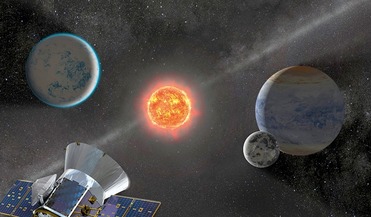 April 2019
Scanning the skies for exoplanets
April 2019
Scanning the skies for exoplanets
...that will be 400 times larger than that covered by Kepler. Like Kepler, TESS will search for exoplanets by detecting the fractional dip in a star’s brightness as an orbiting exoplanet passes by, a technique known as the transit method.... their host stars in 13 days or less; these are considered short orbital period exoplanets. Conversely, Kepler was adept at finding exoplanets with orbital periods from 10 days up to a few hundred days, a feature ...
 November 2018
How many people does it take to colonise an exoplanet?
November 2018
How many people does it take to colonise an exoplanet?
... Located at 4.2 light years (40,000 billion km), Proxima Centauri b is almost an ideal destination - as far as exoplanets go. But while this distance may be small by astronomical standards, it remains utterly vast on the human scale. The... tool to rigorously estimate the minimum population size for a multi-generational journey. He simulated the marital and demographic situation facing small populations of humans trapped in a closed environment...
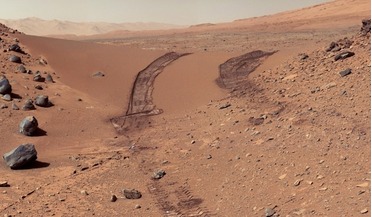 February 2019
Simulating lunar and martian regolith in the laboratory
February 2019
Simulating lunar and martian regolith in the laboratory
...a sample curation room. Its main aim is to produce new regolith simulants, analyse existing simulants and curate a simulant collection for the benefit of engineering and scientific research projects. This collection... and help SACF staff to design a simulant with more representative properties. Alongside improving current simulant developments, there are some ‘missing simulants’, i.e. simulants that replicate a specific regolith or regolith ...
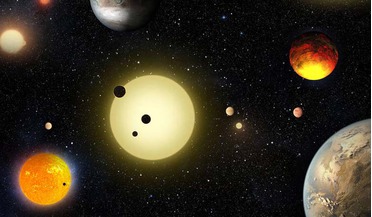 11 May 2016
Kepler scientists announce a major increase in confirmed exoplanet numbers
11 May 2016
Kepler scientists announce a major increase in confirmed exoplanet numbers
... day, 7 days a week, 365 days a year looking for the tell-tale sign of a would be exoplanet. The technique Kepler uses is known as the transit method and it works by measuring the dip in star light as a planet ...by a planet, without requiring any follow-up observations. This involves simulating the detailed shapes of the signals caused by both planets and imposters and then simulating how common they expect imposter signals to be in the Galaxy...
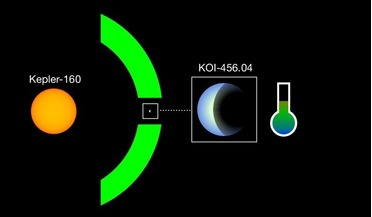 05 June 2020
Exciting exoplanet find around sun-like star
05 June 2020
Exciting exoplanet find around sun-like star
... worlds, detections of rocky worlds around Sun-like stars is comparatively rare, due to the techniques used to find exoplanets. But by improving on an old detection method, a team of German and US scientists have now found a ... not new. It was discovered around ten years ago, followed by the confirmation of two exoplanets, called Kepler-160b and Kepler-160c, four years later. Both of these planets though are substantially bigger than Earth and...
 24 November 2021
Astronomers discover more than 350 possible new exoplanets
24 November 2021
Astronomers discover more than 350 possible new exoplanets
...around smaller, dimmer red dwarf stars instead. Dubbed K2, this “Second Light" mission lasted as long as Kepler’s first exoplanet hunt and bumped its count of surveyed stars up to more than 500,000. But, after nine ... of data about once per month – is still being examined for signs of potential habitable exoplanets. However, because of the problems Kepler experienced, scientists have not been able to use the same automated processes used to find...
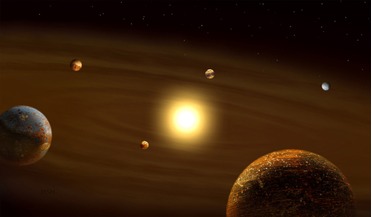 27 July 2019
Hundreds of new planet candidates detected by Kepler
27 July 2019
Hundreds of new planet candidates detected by Kepler
...not the only one making substantial discoveries. Although now officially retired, NASA’s first formidable exoplanet telescope – Kepler – has gone one better. Make that a few hundred better. By scanning through ...title – K2 – and 15 months after being reassigned to its new stellar target, Kepler had racked up its 1,000th confirmed exoplanet discovery. Kepler’s K2 mission comprised of 19 ‘campaigns,’ lasting around 80 days each. These new discoveries...
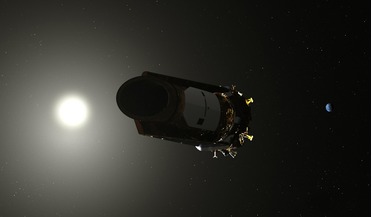 19 November 2018
Kepler officially retires after receiving final "goodnight" commands
19 November 2018
Kepler officially retires after receiving final "goodnight" commands
... working. As the spacecraft needs three functioning wheels to continally monitor a star’s brightness for signs of Earth-sized exoplanets, its field-of-view had to be switched roughly every three months to compensate for the mechanical glitch. The... come closer than a million miles to our planet. The baton will now be handed onto the Transiting Exoplanet Survey Satellite (TESS) to pick up where Kepler left off.